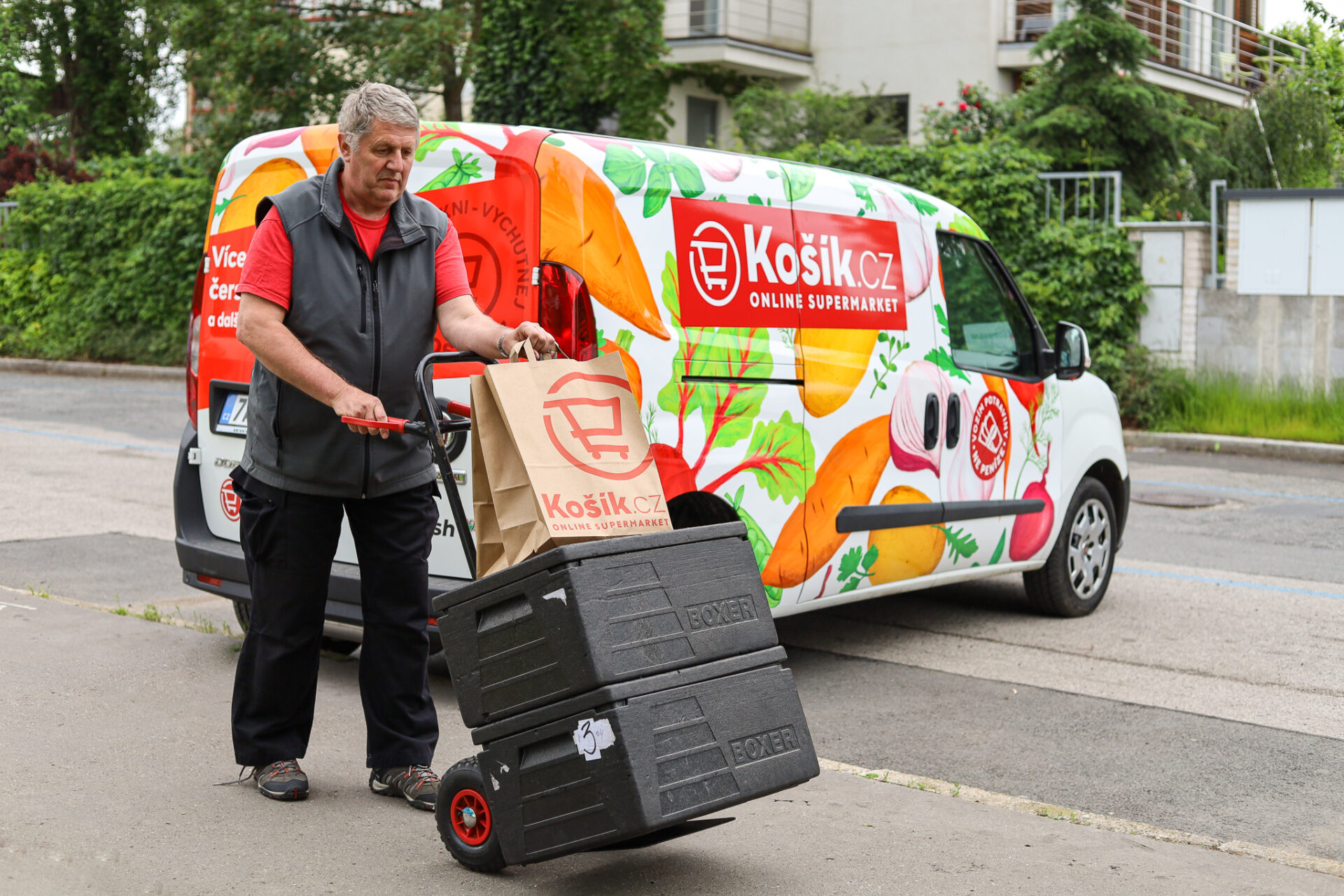But do you have any idea of everything that has to be done before your weekend shopping makes it to your home, what we have to watch out for, and why the on-line grocery business is so complicated? And did you know that we’re among the very best in terms of the quality of this service? That’s precisely why I decided to write a little more on this topic and take you behind the scenes of a fascinating business that has come an incredibly long way in the Czech Republic.
In the first place it needs to be said that on-line grocery shopping is a much more comprehensive service than classical e-commerce. Instead of one product, orders routinely consist of 60 items, and even one mistake can have unpleasant consequences. When you invite someone over for supper but the goose and sauerkraut are missing from the order, or it arrives an hour later and you don’t have enough time to cook it, it can ruin the entire evening.
The pressure on quality, simply put, is enormous. In general, people are most sensitive to the quality of fruit and vegetables. Not even one orange can be bruised, everything must be perfect; expectations are high in this regard, and strict quality control is a must. We can’t forget anything, which is why we weigh every order, and if the weight doesn’t match our system’s estimate, we check it manually.
On-line grocery shopping places enormous demands on warehouses too. In a normal one, dust doesn’t matter, but ours has to be extremely clean. Some groceries don’t have a very long shelf life, so we have to check batches constantly and communicate with a huge number of suppliers. Košík also does some of its own baking, so imagine what happens when your oven stops working and you suddenly don’t have enough baked goods. That’s a nightmare. On top of that we stock 17,000 different items, which is roughly eight times as many as a normal brick-and-mortar supermarket.
A unique Czech e-shop that works
If you’re asking yourself why none of the large retail players have entered the on-line sales market completely when they sell groceries anyway, the answer isn’t simple. It’s a much more complicated business that they aren’t capable of handling. They’d either need a completely new warehouse dedicated to on-line sales, or they’d have to pick goods directly from the supermarket shelves. The first approach is too complicated for them, while the second one doesn’t work in terms of economics.
There were some attempts by our neighbours, but customers here aren’t used to paying someone else do their shopping for them. An hour of work costs at least EUR 14, and a 50-item shopping list takes at least a half-hour, add to that the cost of transport, and you end up with an amount that nobody wants to pay. People have gotten used to paying for delivery of food from restaurants, but that doesn’t apply to groceries yet. For brick-and-mortar supermarkets, it is therefore much better if customers come and do their own shopping.
Two things are needed for on-line groceries to work from a business perspective. First, you need to get the order out the door as quickly as possible. Aside from speed, efficiency also plays an important role. There are a billion details – for example, a small van will hold an average of 11 to 15 orders, which have to be loaded as economically and efficiently as possible.
The second key thing is the “last mile”. Which means how efficiently and quickly you deliver the orders. Ideally, one van would deliver all its orders within several blocks, and would drive one and a half kilometres between stops instead of five. That’s why we use a sophisticated system that tries to arrange the last mile as efficiently as possible, which is easier the more customers there are. By the way, that’s why Košík works so well in České Budějovice, for example. There may not be as many orders there as in Prague, but they’re delivered over much smaller distances.
When changing the way you think pays off
The fact is, thanks to Košík’s and Rohlík’s fight over customers, the Czech online grocery market is the most advance in Europe, in my opinion. As a result, customers here have superior services. In Western Europe, next-day delivery is the norm, which from the perspective of logistics is simpler than the two or three hours we’re used to here in the Czech Republic. That’s completely out of the question in other countries. People in surrounding countries also don’t as much faith in on-line shopping, which is something you can always tell from how much of the order consists of fresh and “ultra-fresh” goods. Czechs aren’t afraid of it, and these groceries make up over 50 percent of orders here – abroad, non-perishable groceries tend to dominate.
By the way, that’s what pleases me the most, when it comes to Czechs. Formerly, we all shopped by going to a brick-and-mortar shop, and filled up our shopping basket depending on what we saw there. When you shop on-line, that doesn’t work very well. And in the beginning we struggled with it. Our typical customer has their typical order that they repeat, and when they change something they have to put more thought into it. And that’s what people weren’t very capable of doing at the beginning. They thought that it took more time. They felt that they spent more time on it. But that’s not the case. And Czechs have realized this and have long since eliminated this block.
This finally brings me back to the beginning. On-line groceries are an extremely difficult business that works only if you’ve got a critical mass of customers, but it’s also a business with enormous potential. On-line shopping still makes up roughly only 1.5 percent of all purchases. So there’s still room for growth and there’s still room for improvement.
Author: Dušan Zábrodský



